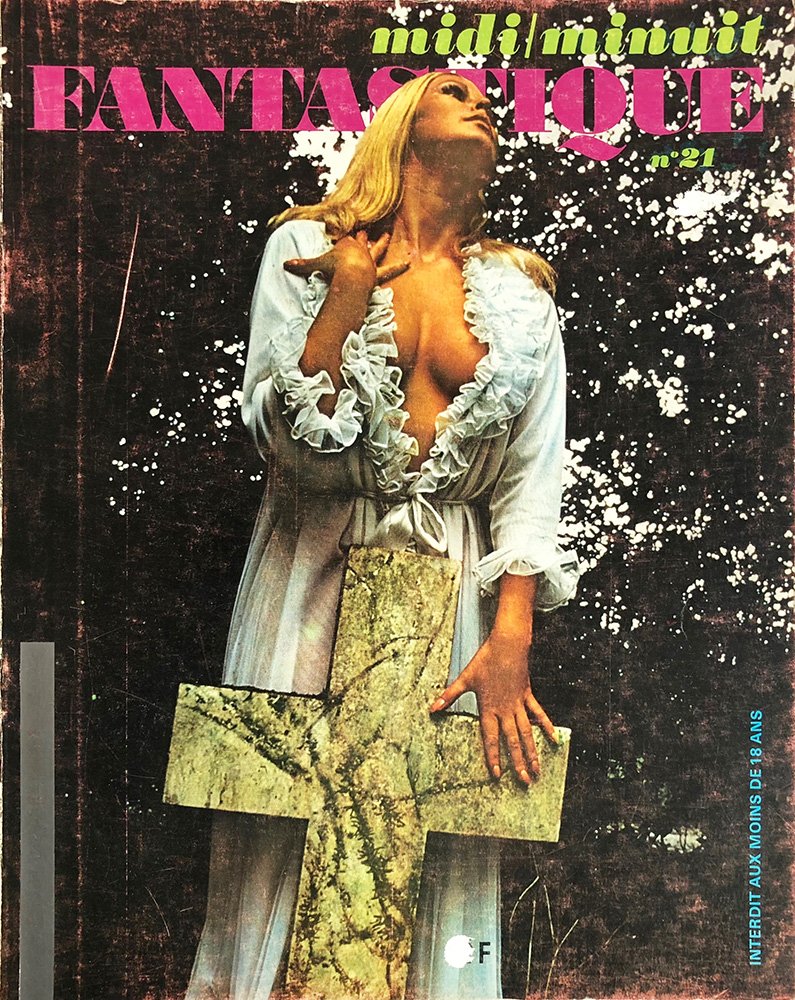Nick Zedd was an American filmmaker known for no-budget films such as Police State (1987) .
RIP Veronica Carlson (1944 – 2022)

Veronica Carlson was a British actress best known for playing in Hammer horror films.
Above she takes refuge behind a cross in Dracula Has Risen from the Grave (1968).
The publicity shot is from the cover of Midi Minuit Fantastique 21 (1970).
RIP Richard Pratt (? – 2022)
Richard Pratt was an American singer and co-founder of the American band Blue Magic.
Blue Magic was one of the more popular Philadelphia soul groups of the 1970s. The group was one of the earliest acts produced by Norman Harris. Backed by the MFSB house band, they are known for such recordings as “Welcome to the Club” (1974).
That song is featured on Grass Roots: Ashley Beedle (1999).
RIP Denroy Morgan (1946 – 2022)
Denroy Morgan was a Jamaican singer. He is known for such recordings as “I’ll Do Anything For You” (1981).
RIP Mark Lanegan (1964 – 2022)
Mark Lanegan was an American singer, songwriter, author, and musician known for such compositions as “The Gravedigger’s Song” (2011).
Then there is “Crystalised”, a cover of a The xx song, which is featured on a rather interesting mix tape.
RIP Gary Brooker (1945 – 2022)
Gary Brooker was an English singer-songwriter known for co-writing “A Whiter Shade of Pale” (1967).
RIP Dan Graham (1942 – 2022)

Dan Graham was an American visual artist known for such artworks as Belgian Fun (2004).
RIP P. J. O’Rourke (1947 – 2022)
P. J. O’Rourke was an American libertarian political satirist and journalist.
He wrote books such as Holidays in Hell (1988).
RIP Sandy Nelson (1938 – 2022)
Sandy Nelson was an American drummer known for such compositions as “Let There Be Drums” (1961).
Incredible Bongo Band‘s oft sampled rendition of this instrumental was released in 1973.
RIP Howard Grimes (1941 – 2022)
Howard Grimes was an American drummer, known for playing on such recordings as Ann Peebles’s “I Can’t Stand the Rain” (1973).
